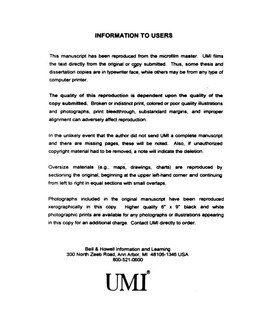| dc.contributor.advisor | Cook, Paul F., | en_US |
| dc.contributor.author | Zhang, Lei. | en_US |
| dc.date.accessioned | 2013-08-16T12:31:08Z | |
| dc.date.available | 2013-08-16T12:31:08Z | |
| dc.date.issued | 2000 | en_US |
| dc.identifier.uri | https://hdl.handle.net/11244/6019 | |
| dc.description.abstract | In the second part of the research, three additional mutants, S 128A, H 186A and N187A were characterized in the same manner as the K183 mutant enzymes. The decrease in the activity compared to the wild type enzyme is about 200-fold for the H 186A and N 187A mutant enzymes, but only 12-fold for the S 128A mutant enzyme. Dissociation constant for 6PG from the E:NADP:6PG complex (K6PG) is increased by around 6-fold for both S 128A and H 186A and 16-fold for N 187A. Product inhibition studies by NADPH give a dissociation constant for the E:NADPH complex (Kis) that is increased by 5- to 6-fold for the S 128A and H 186A mutant enzymes at nonsaturating 6PG. No significant change is found in Kis value for the N 187A mutant enzyme. The primary deuterium isotope effects decrease for S 128A and H 186A, and increase in the case of N 187A compared to those of the wild type enzyme. The kinetic data suggest that all of the three enzyme side chains are responsible for binding the substrates, and that both S 128 and H 186 play an important role in the decarboxylation process, while N187 facilitates the hydride transfer step. | en_US |
| dc.description.abstract | 6-Phosphogluconate dehydrogenase (6PGDH) catalyzes the reversible oxidative decarboxylation of 6phosphogluconate to ribulose-5-phosphate and CO2 with the concomitant reduction of NADP to NADPH. Site-directed mutagenesis was used to change K183 of sheep liver 6-phosphogluconate dehydrogenase to A, E, H, C, Q, R, and M to probe its possible role as a general base catalyst. Each of the mutant proteins was characterized with respect to its kinetic parameters at pH 7, and the pH dependence of kinetic parameters for the K183R mutant enzyme. The only mutant enzyme that gives a significant amount of catalysis is the K183R mutant. Its activity is decreased by about 3 orders of magnitude, and the general base pK is perturbed to a value greater than pH 9. All other mutant enzymes have rates that are decreased by about 4 orders of magnitude compared to the wild type enzyme. Data are consistent with the general base function of K183. | en_US |
| dc.format.extent | xvii, 131 leaves : | en_US |
| dc.subject | Enzymes Synthesis. | en_US |
| dc.subject | Pentose phosphate pathway. | en_US |
| dc.subject | Proteins Research. | en_US |
| dc.subject | Dehydrogenases. | en_US |
| dc.subject | Chemistry, Biochemistry. | en_US |
| dc.title | Dissecting the reaction mechanism of sheep liver 6-phosphogluconate dehydrogenase. | en_US |
| dc.type | Thesis | en_US |
| dc.thesis.degree | Ph.D. | en_US |
| dc.thesis.degreeDiscipline | Department of Chemistry and Biochemistry | en_US |
| dc.note | Major Professor: Paul F. Cook. | en_US |
| dc.note | Source: Dissertation Abstracts International, Volume: 61-08, Section: B, page: 4144. | en_US |
| ou.identifier | (UMI)AAI9985568 | en_US |
| ou.group | College of Arts and Sciences::Department of Chemistry and Biochemistry | |
